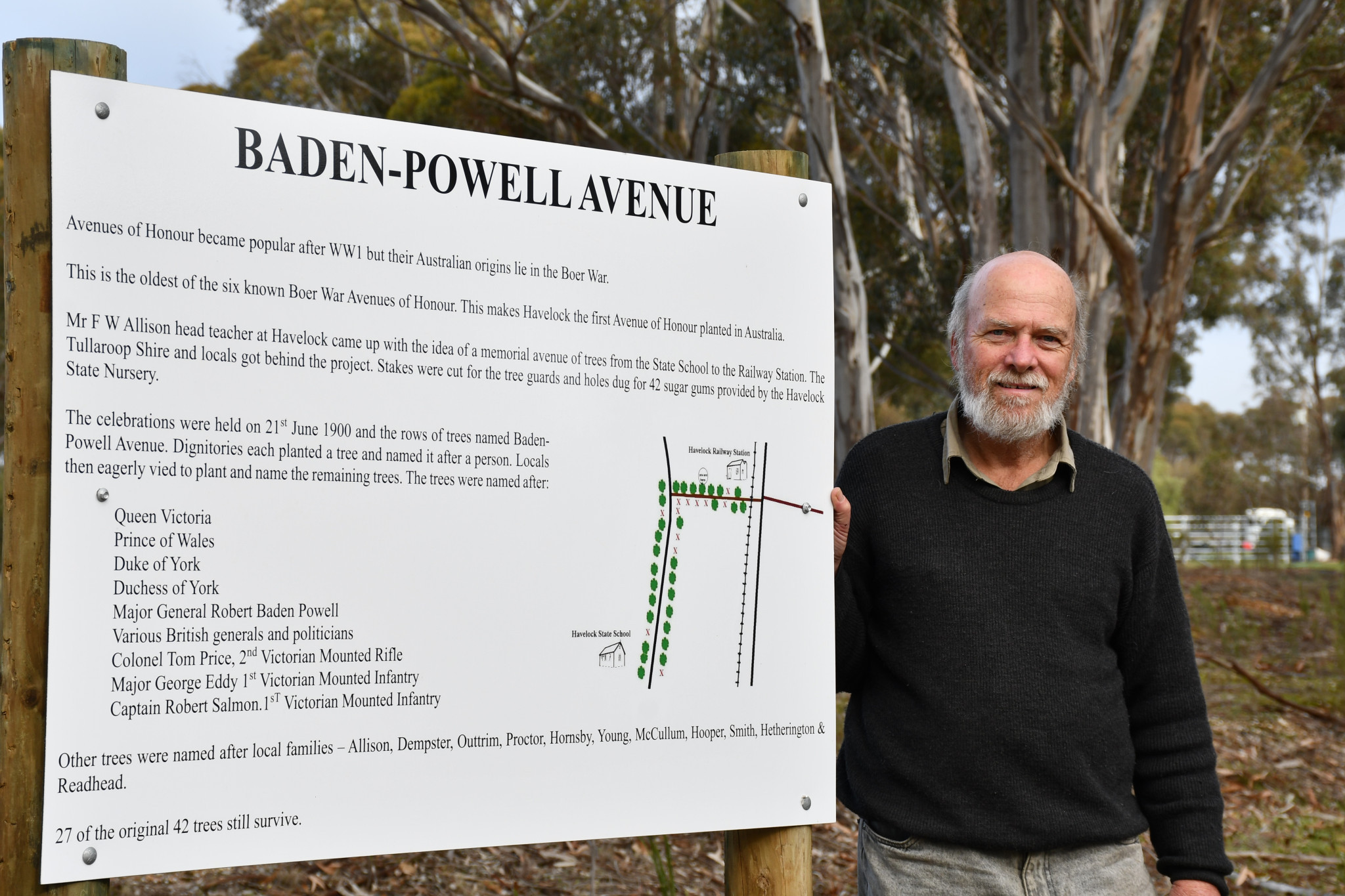General News
18 July, 2025
Historic avenue rediscovered
Havelock’s forgotten and neglected avenue of honour has been recognised as the first of its kind in the country — but locals and experts agree there’s more work to be done.

A commemoration of the Boer War, English Empire dignitaries, and local families, the overlooked Sugar Gums of the Baden-Powell Avenue was a largely forgotten section of nature-strip along Maryborough-Dunolly Road.
That was until Dunolly Museum’s efforts, and countless volunteer hours, uncovered the avenues 125-year-old history.
Since being rediscovered a year ago, the avenue has gone on to be recognised by TREENET’s Avenue of Honour documentation project and the Victorian Heritage Database through the state’s National Trust.
Despite this recognition, however, the avenue currently has no legislative protection. Nothing protects the remaining half of the estimated 42 trees that were planted.
President of the Goldfields Historical and Arts Society John Tully, who helped lead the project, hopes the sites recognition not only protects it but encourages its restoration.
“There’s something historic that should get preserved that’s been neglected for 100 years,” he said.
The avenue was originally planted on June 21, 1900, in a collaboration between the local community and the former Shire of Tullaroop.
The Sugar Gums were planted in regular intervals which still can be seen today starting at the Havelock State School 1264 to the nearby railway gate — neither of which still exist.
“The amazing thing is from [head master Mr F. W. Allinson] coming up with the idea to planting the trees took three weeks,” Mr Tully said.
TREENET’s own Glenn Williams, an experienced avenues of honour expert, said making the avenue more widely known is vital for its preservation.
“The single biggest threat to these living memorials is simply ignorance,” he said.
“Only a handful of Boer War avenues have been recorded or observed and very few of them are actually intact in any shape or form.”
Although there is now one sign at the site through community effort Mr Tully hopes to improve signage for the trees and street, parking, and clean up the historic avenue.
“Doing this sort of stuff costs lots of money. That’s beyond the historical society. That’s not our responsibility,” he said.
Mr Williams said, from his years of experience, the future of these avenues rests predominantly with the community and local council.
“It can’t always be down to local community fundraising,” he said.
“I’m sure there’s a role for the Central Goldfields Shire to play.”
The Central Goldfields Shire Council did not comment when asked whose jurisdiction parts of the avenue were and if they had plans to preserve or improve the historic site.
